Five students of the
'Class of 22' is the only group exhibition presenting graduation projects from various Dutch academies within multiple design disciplines. The project’s goal is to emphasize the importance of education and to give center stage to the next generation of designers to a bigger audience.
'Recipes of displacement' by Uzvar Collective
Work by: Karolina Uskakovych (Graphic Design), Stefania Bodnia (Graphic Design), Alyona Ciobanu (Graphic Design), Vlad Omelianenko (Graphic Design), Anastasia Troshkova (Photography). Together they form 'Uzvar Collective', a student-led charity group, funded by KABK students shortly after the full-scale invasion of Ukraine by the Russian Federation on 24 February 2022.
Karolina Uskakovych about 'Recipes of displacement': "We are working on the performative video installation called 'Recipes of displacement' in which we collaborate with Ukrainian volunteers, who are producing dry borshch (Ukrainian soup) mixes for humanitarian needs. Our video installation is part of the exhibition 'Those among us', a project initiated by Michelle Lai, an Eindhoven-based curator and producer of Plant Fiction Studio in Eindhoven. They invited 'Uzvar Collective' to participate in the production of the project.
‘Recipes of displacement’ is a video installation, featured on three screens. The main screen is dedicated to the interviews of five people from different backgrounds, who fled Ukraine. They share stories about their journey to the Netherlands, perceptions of the new status of ‘temporarily relocated persons’, and the overlaps of the Ukrainian-Dutch cultures. The second screen features the process of cooking borshch.
As an inspiration for their project, we used theories of sociologists. The ‘Melting pot’ theory suggests that different cultures come together and contribute different aspects of their culture to create a new one, in which they are indistinguishable from each other and ‘melted’ together. According to the ‘Salad bowl theory’, cultures do not lose their unique features and stay as separately identifiable elements.
In our project ‘Recipes of displacement’, the students suggest to look at something in between – a bowl of Borshch. Borshch is a national Ukrainian soup, usually made of beets, potatoes, cabbage, onion, beans, and carrots. Its ingredients come together and create an amazing taste, filled with diverse flavours and textures. It’s an excellent example of multiplicity and pluralism, deprived of the ‘neoliberal individualism’. As we learned from our film, bearers of Ukrainian and Dutch cultures gladly share, learn, and enrich each other."
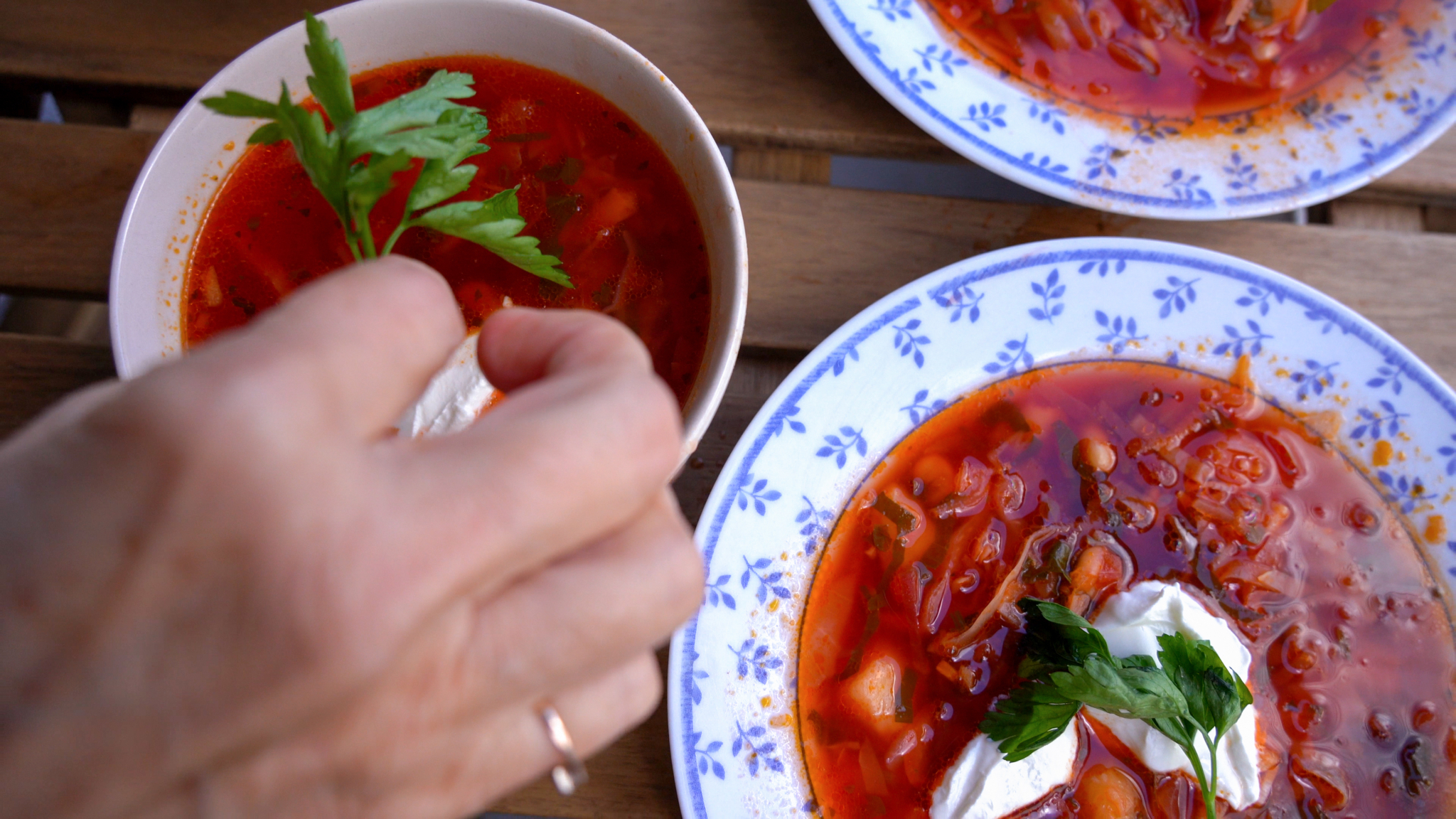
'To be a host in a hosting country' by Ilaria Palmieri (MA Interior Architecture)
Ilaria Palmieri about 'To be a host in a hosting country': "The vision of hospitality that my project shows, aims to reconsider the notion of privately owned and publicly owned space. My design continues in that direction, developing a proposal for municipalities, recognizing that the current policy regulations lack an understanding from the refugee’s perspective and miss the necessity of creating collective spaces. I propose a new chapter called 'To be a host in a hosting country' constituting new fundamental criteria for the planning of refugee centres.
My proposal comes to life not only with a new wording but also with illustrations that show how the architectural drawing is no longer exclusively about spatial configurations, but includes traces and objects of everyday use and patterns. The hope is that The Art of Invitation will constitute a base for the allocation of refugee centres with the presence of a collective space."
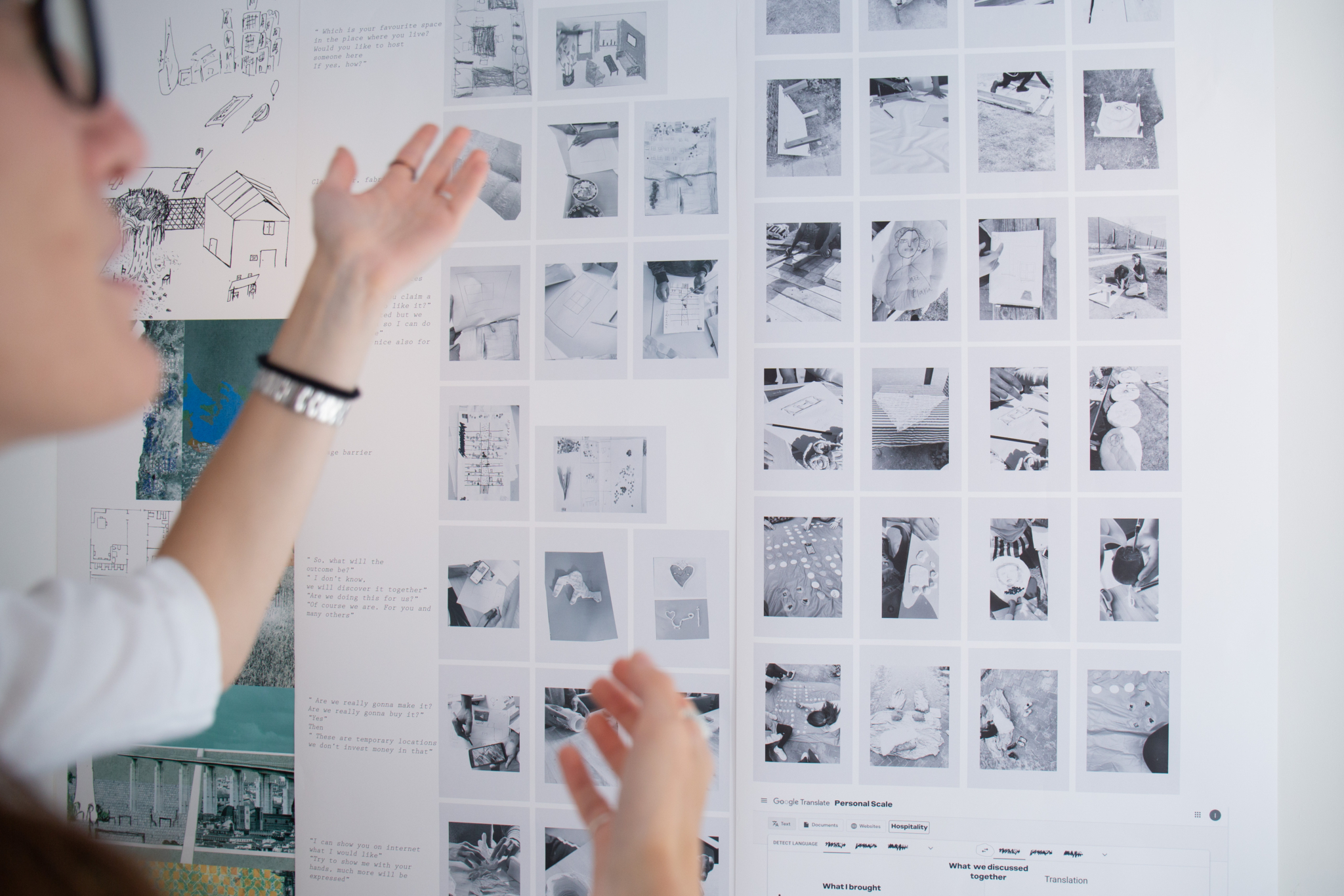
'No Purpose City' by Malte Sonnenschein (MA Interior Architecture)
Malte Sonnenschein about 'No Purpose City': "In investigating the tasks and opportunities of the public space, I find special interest in their meaning to display a city's plurality to offer us a chance for the encounter of otherness. Public spaces contribute to the tolerance and solidarity of their users, they enable integration and strengthen our society, if they are provided in an accessible and safe way — if they are usable by everybody.
Most of the public spaces in Northern European cities are dedicated to transit. But in their midst, we can find spaces whose lack of infrastructure makes moments of encounter, or dwelling difficult — if not impossible. These places I call the 'No Purpose Cities' within our city.
I want to introduce you to my method of working, the discipline of the modelling architect, who works right on site, testing their work in its immediate effect. A discipline to appreciate these spaces and to turn them into stages of experience and encounter. By experimenting with the affordances of the city, I collect the ingredients to sketch out the different realities of the No Purpose City.
What I offer authorities in their aim for successful public spaces is not one single solution. It's a continuous exploration process, in which some modelled spaces might stay for an hour while others prove to last for years. The variety of activities is key. The choice for the activities is site specific and follows what's present or missing in each location individually."
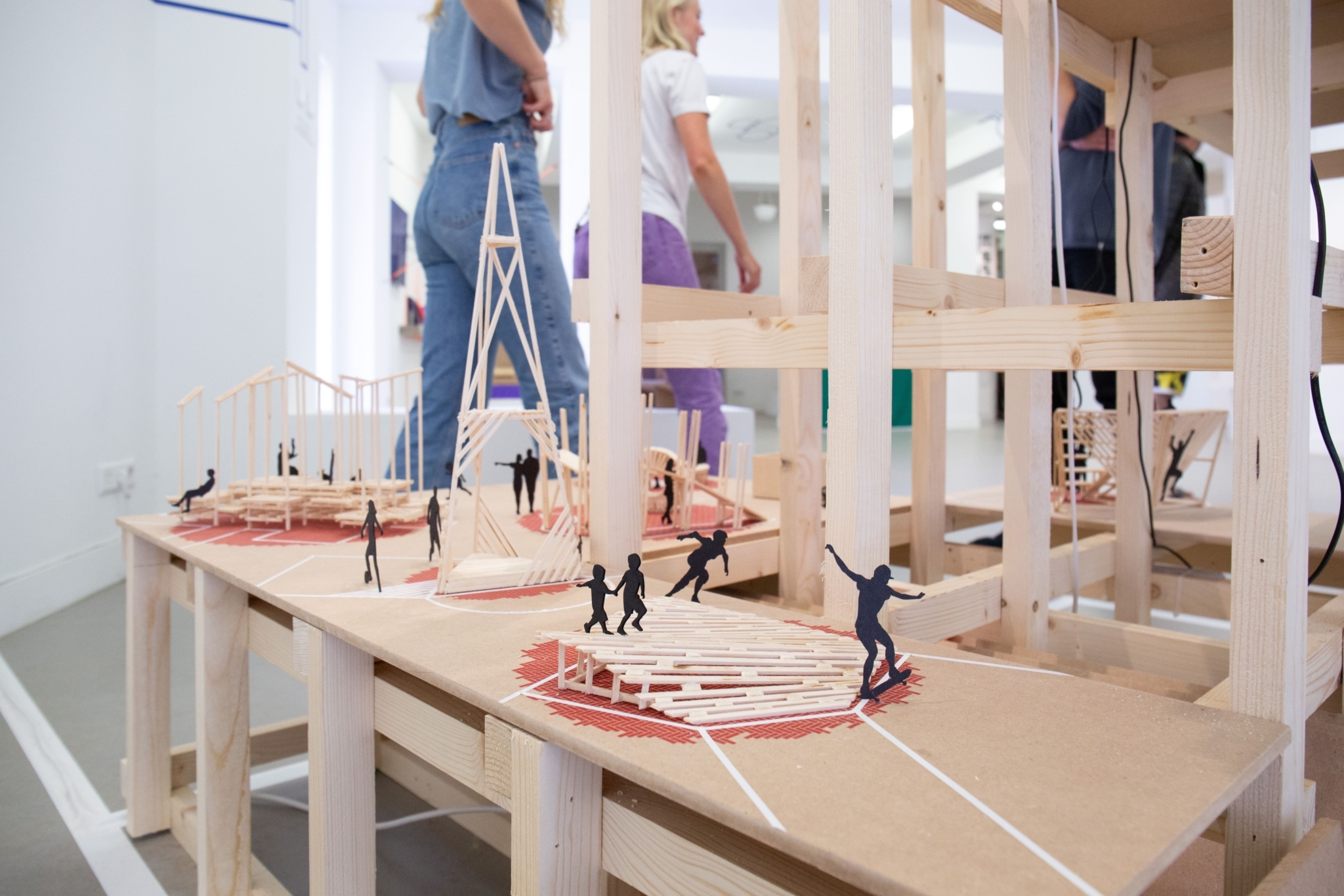
'Wardian cart' by Nina Škerjanc (MA Industrial Design)
Nina Škerjanc about the work: "Plants are categorised through scientific taxonomies and systems and are often presented as preserved and isolated specimens in pots or herbarium sheets. These established systems of botanical knowledge and representation maintain the nature/culture divide. How does that affect the way we live and relate to culture and nature? How can we imagine different ways of looking at and knowing about plants beyond dominant ways of knowing? How can botanical heritage be preserved, maintained, and experienced in ways which contribute to healing our relationship with plants? By making a Wardian cart, I built a traveling research station that brings together people and practices that center on plants and their relations to their local environments. The cart, based on the colonial botanical artifact, includes dualisms in the discussion on colonial history.
In order to challenge the dominant botanical knowledges and representations, I wanted to create a space that would enable other ways of knowing plants, based on situated and embodied views. I wanted to bring together human and non-human communities and co-create an alternative botanical heritage based on imagination, storytelling, and experiences. By questioning not just the systems but also the methods by which knowledge is created, I hope to shift away from paradigms of human exceptionalism and build practices that encourage reflection, empathy, and care towards our environment. How can we imagine different ways of knowing and being with plants? How can we re-imagine natural heritage as a learning tool for a more symbiotic future?"
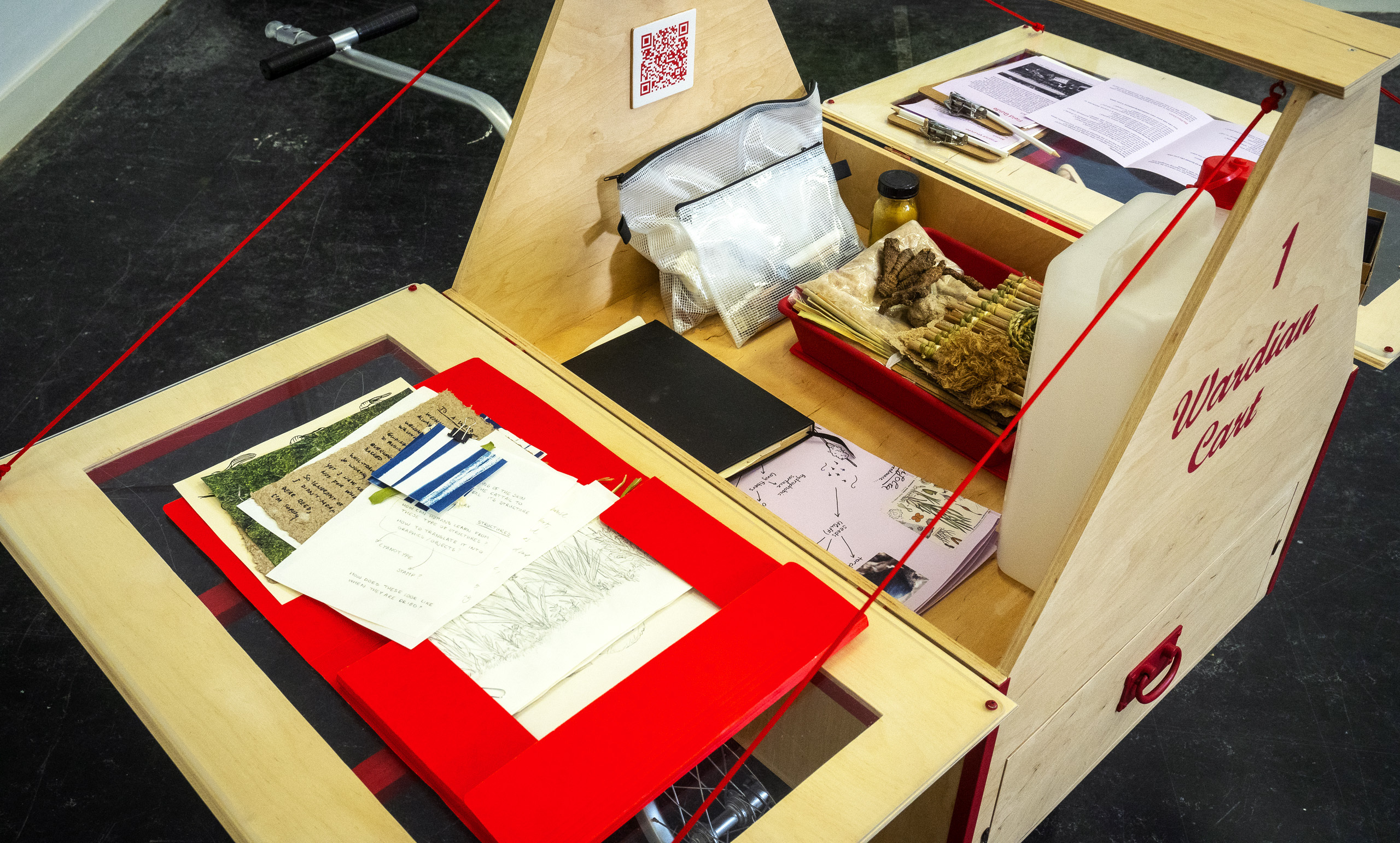
'Computation and Waste' by Stefan Lang (MA Industrial Design)
Stefan Lang about the project: "Computation and Waste" is a project that combines the capabilities of computational design software with the pressing issue of construction waste. By using a 3D-scanner, discarded material is digitalized and collected into a digital archive, which the parametric system uses to create products with the given geometries.
The goal is to minimize the need for raw materials when buil- ding and designing, and to think beyond standardized materials to envision multiple material futures. What can be designed when irregular surface structures or non-standardized geometries no longer hinder a design process?"
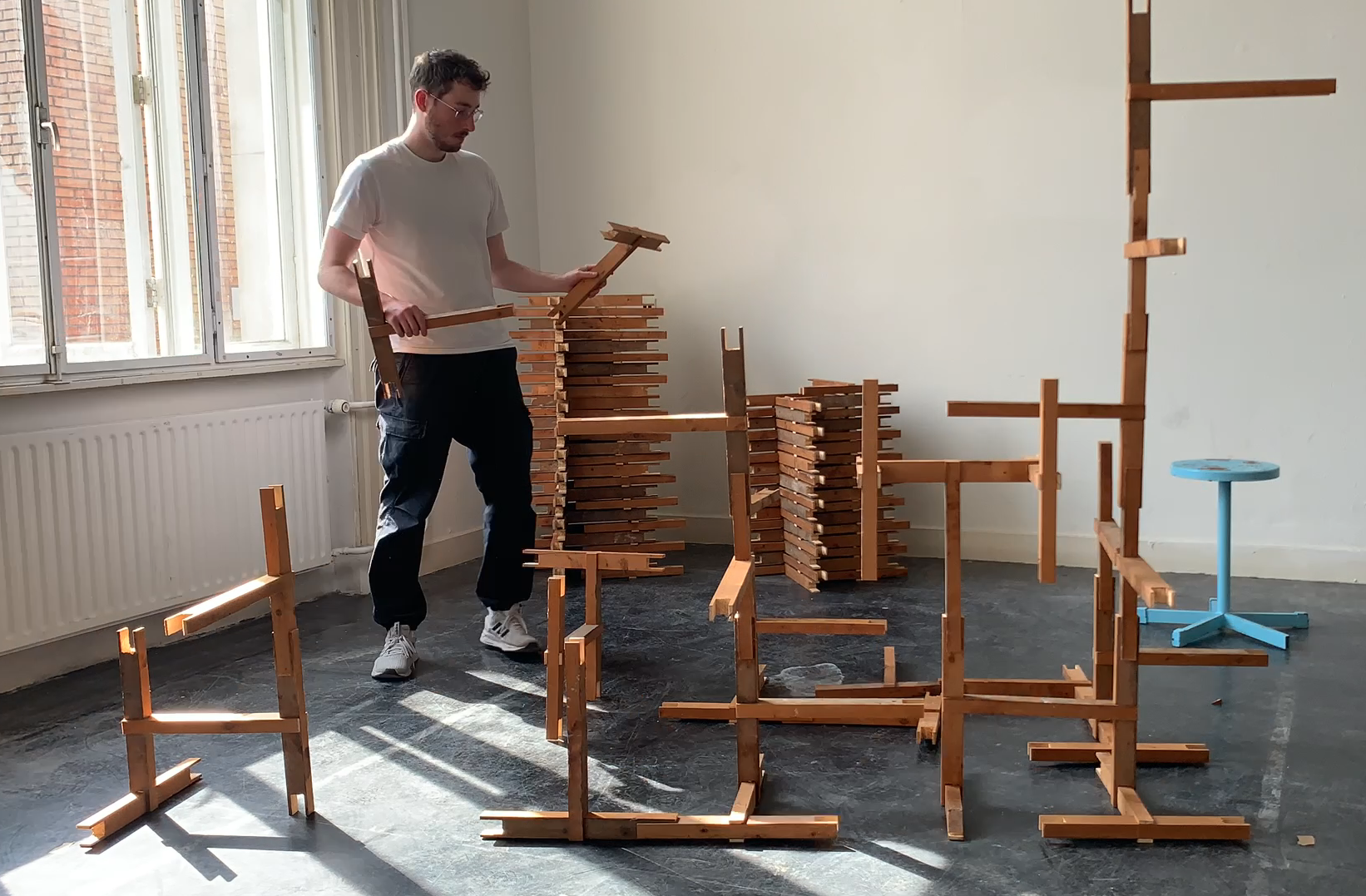
The projects of KABK students can be found here: Strijp-S area, Klokgebouw | Hall 3, Klokgebouw 50 , Map No. B1.
About DDW
Dutch Design Week in Eindhoven is the largest design event in Northern Europe and presents work and concepts from more than 2,600 designers to more than 355,000 visitors from home and abroad. All disciplines in the field of design are covered, both in art and applied form. The emphasis is on experimentation, innovation and crossovers. Special attention is paid to the work and development of young talent.